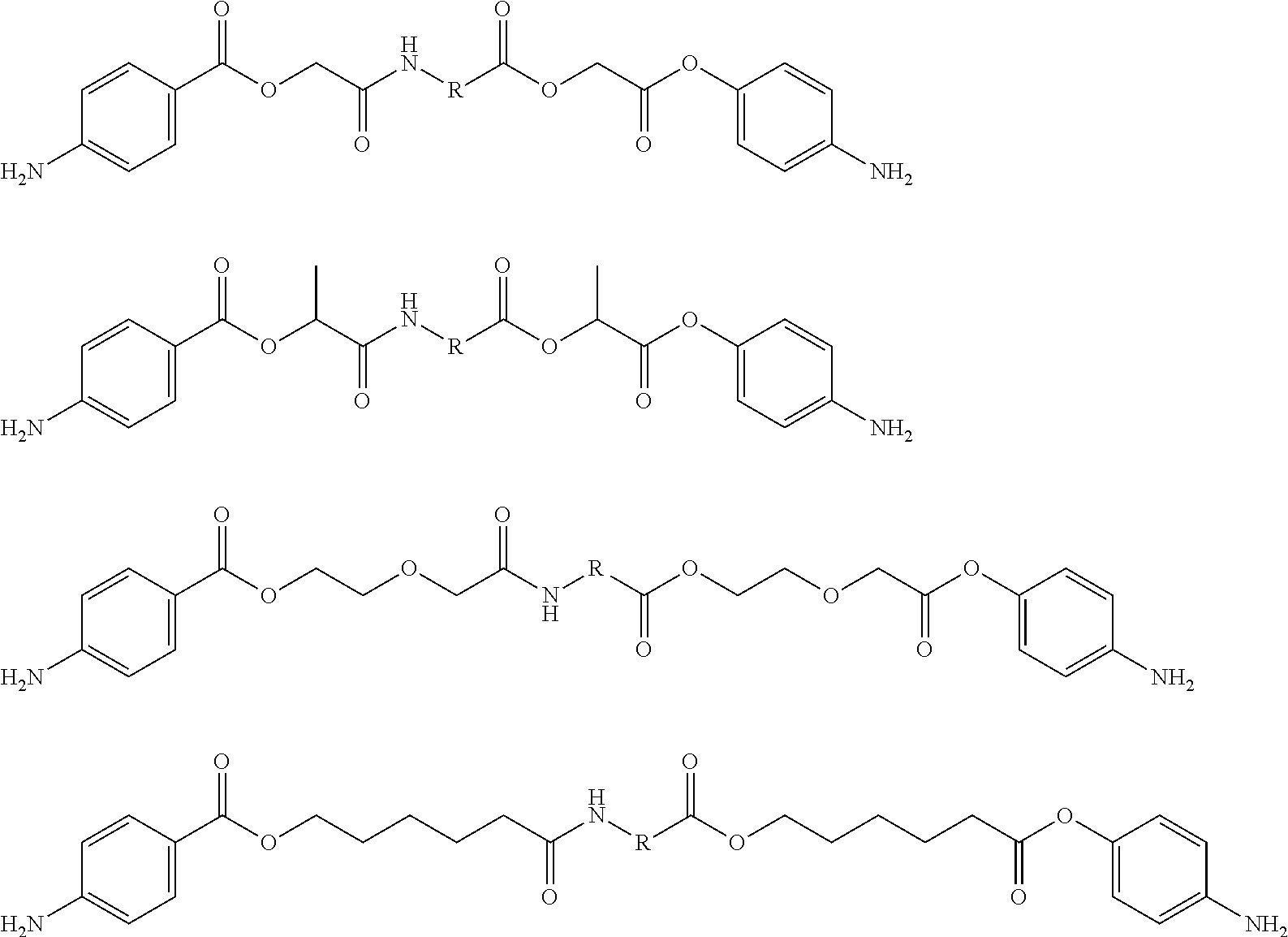Amino acid derivatives and absorbable polymers therefrom
a technology which is applied in the field of amino acid derivatives and absorbable polymers therefrom, can solve the problems of loss of mechanical strength, reduced molecular weight of polymers, and limited use of monomers in many applications
- Summary
- Abstract
- Description
- Claims
- Application Information
AI Technical Summary
Benefits of technology
Problems solved by technology
Method used
Image
Examples
example 1
Synthesis of L-Lysine Methyl Ester Dihydrochloride
[0188]
[0189]To a mixture of L-Lysine-Hydrochloride (100 g) in 1.75 L of methanol at 0° C. was bubbled dry HCl for 7 hours. The crude solid product was filtered, dried to get pure L-Lysine methyl ester dihydrochloride (117 g, 91.6%) as a white powder with a melting point of 204.5-206° C. The compound was characterized by 1H NMR (DMSO-d6) δ 1.48 (m, 2H, CH2), 1.68 (m, 2H, CH2), 1.90 (m, 2H, CH2), 2.80 (m, 2H, CH2), 3.78 (s, 3H, Ester), 4.00 (t, 1H, CH), 8.20 (bs, 2H, NH2), 8.70 (bs, 2H, NH2).
example 2
Synthesis of benzyloxy carbonyl methoxy-acetic acid
[0190]
[0191]To a mixture of diglycolic acid (100 g), triethyl amine (136 ml) in Acetone (1000 ml) at 0° C. was added benzyl bromide (90 g) and stirred at room temperature for 20 hours. The reaction mixture was filtered to remove salts, distilled off acetone, poured onto 10% Sodium bicarbonate solution (1000 ml), washed with Ethyl acetate (200 ml X 3), aqueous phase made acidic to pH 2 with dil Hydrochloric acid, extracted with ethyl acetate, washed with water (600 ml), dried over Sodium sulphate, distilled under reduced pressure to give pure Benzyloxy carbonyl methoxy-acetic acid (80 g) as light yellow syrup. The compound was characterized by 1HNMR (CDCl3) δ 4.30 (s, 4H, CH2 X2), 5.25 (s, 2H, CH2), 7.40 (m, 5H, Ar), 9.25 (bs, 1H, COOH).
example 3
Synthesis of chloro carbonyl methoxy-acetic acid benzyl ester
[0192]
[0193]A solution of Benzyloxy carbonyl methoxy-acetic acid (40 g) and Thionyl chloride (80 ml) was stirred at reflux temperature for 3 hours. Excess Thionyl chloride was distilled off, to the residue was added toluene (100 ml) and distilled off the solvent completely to get chloro carbonyl methoxy-acetic acid benzyl ester (40 g) as a light brown liquid which was used without further purification.
PUM
| Property | Measurement | Unit |
|---|---|---|
| temperature | aaaaa | aaaaa |
| pH | aaaaa | aaaaa |
| temperature | aaaaa | aaaaa |
Abstract
Description
Claims
Application Information
 Login to view more
Login to view more - R&D Engineer
- R&D Manager
- IP Professional
- Industry Leading Data Capabilities
- Powerful AI technology
- Patent DNA Extraction
Browse by: Latest US Patents, China's latest patents, Technical Efficacy Thesaurus, Application Domain, Technology Topic.
© 2024 PatSnap. All rights reserved.Legal|Privacy policy|Modern Slavery Act Transparency Statement|Sitemap



